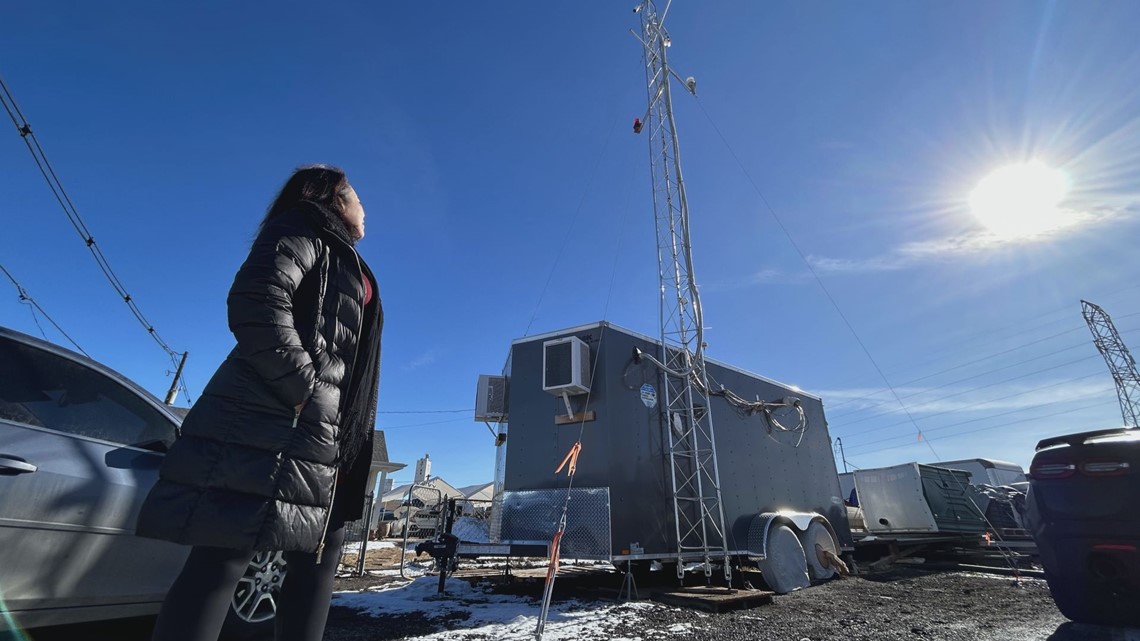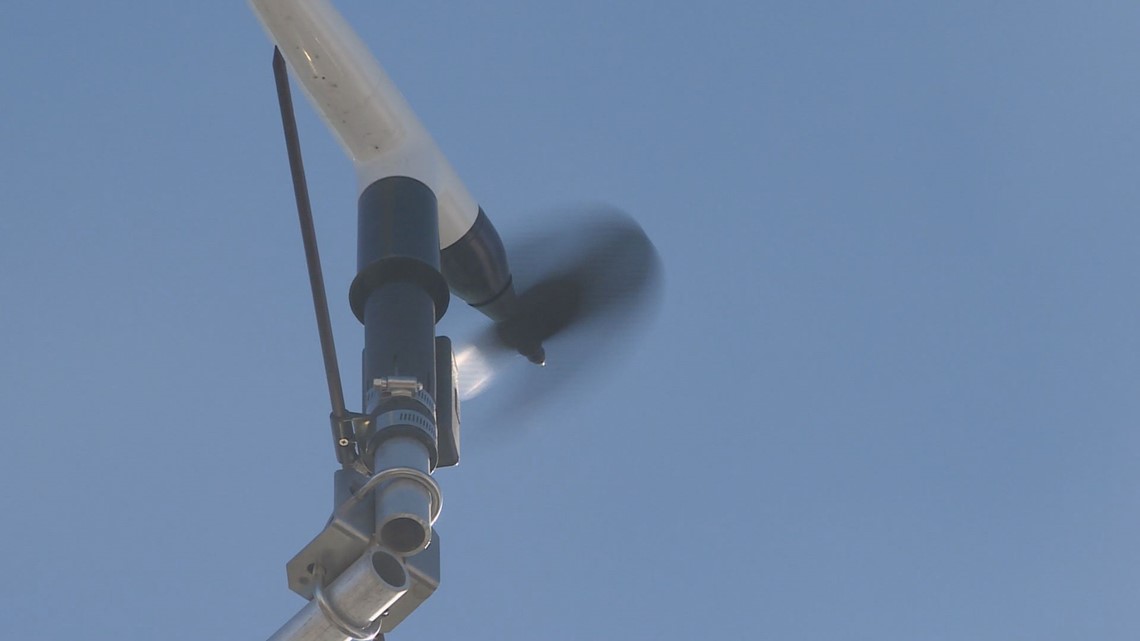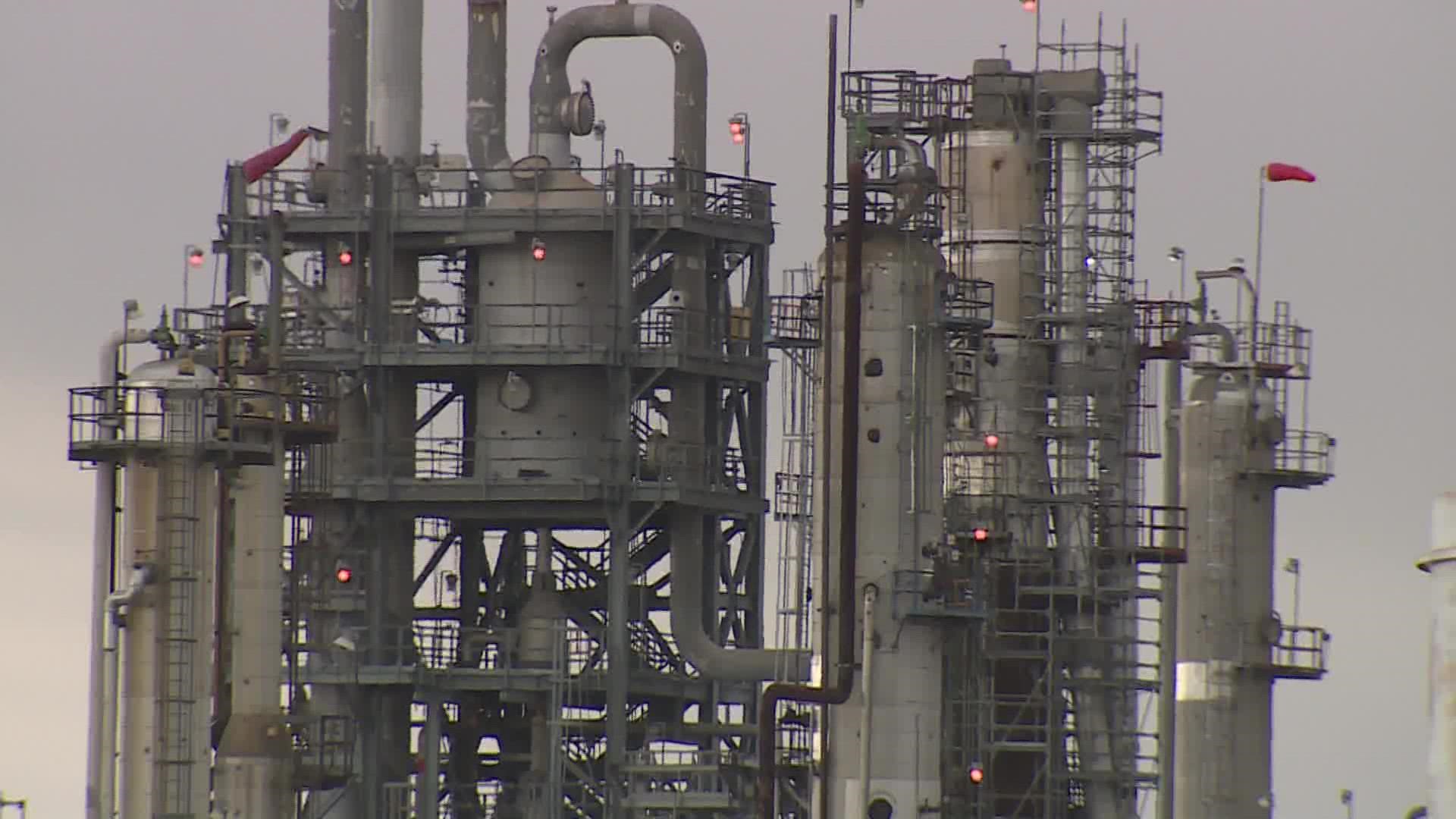COMMERCE CITY, Colo. — The state's only refinery, Suncor, seemingly has an impact, in some way, on most Coloradans.
However, what that impact is exactly depends on who you talk to.
"The biggest concern of the residents here in Commerce City has been the air quality," said Olga Gonzalez, the executive director of the Adams County-based nonprofit, Cultivando.
Her organization teamed up with Boulder AIR to install an air monitor in the area of the refinery, which is supposed to track the level of pollutants in the general area.
In December, the Suncor refinery entered a "shutdown" due to equipment damage. A spokesperson said in a statement that they expect to return to normal operations by "late Q1 2023", meaning around March.
The shutdown could hold impacts on both nearby residents and those across the entire state.
But Gonzalez hopes to take the time, while the refinery is shut down, as a learning opportunity.
"...and we'll continue to monitor what is happening during the three months and we'll be able to compare and contrast what the readings are showing," she said.


Keeping a close eye
Cultivando has been tracking air pollutants in Commerce City for around a year now, with a mobile air monitor in the Globeville-Elyria-Swansea area.
"This means so much to me because there are many families and children who live in this community. People sometimes forget that because they see the factories and everything," she said. "But we have had community members who've lived here for decades, and so we are concerned about the cumulative effect of living under these conditions every single day of their lives."
A spokesperson said in a statement in part that they are now in "safe mode" and that their investigation and repairs are ongoing.
Among other things, safe mode means that they have "reduced feedstock and have de-pressurized equipment."
"Flaring continues to be needed as we prepare equipment for maintenance, and it is controlled within emission limits," the statement adds in part. "While we work to repair and then re-start different areas of the refinery, there may be noise and traffic related to our operations."
As for the air monitoring operation, Detlev Helmig, an atmospheric scientist, who is also the owner and principal for Boulder AIR, says as of now, it's too early to determine whether or not there is an official significant difference between when Suncor was up and shut down.
"So we were just coming up to speed last year in January, February or March. So we're really slow on comparison data from last January, unfortunately," he said over the phone Thursday.
However, they anticipate having more concrete comparisons in the coming weeks and months as the shut down persists.
Helmig says they are monitoring anywhere between 25 to 30 different pollutants, each of which hold a different history, origin emission patterns and sources.
Additionally, he explained that it's important to note that weather can play a role in the readings they receive.
"And this complexity is that what we observe from the atmosphere is also driven very much so by the seasonal cycle - the seasonal behavior. In the winter, pollutants accumulate much more near the surface than during the warmer time of the year," he explained.
The impacts of the shut down however, extend also to consumers across the state.


Gas prices
Michael Orlando is a former petroleum engineer who is now a managing director with Econ One and an adjunct professor in the Global Energy Management Program at the University of Colorado Denver Business School.
While prices at the pump have fluctuated recently, he doesn't expect consumers to feel as big of an impact as expected.
"But I do think consumers should expect more volatility in prices. And so to the extent they're going to change their their driving or shopping patterns, it's got probably more to do with volatility than with average prices," he said.
While the refinery produces about 35% to 40% of the gas and diesel sold in Colorado, the majority of the fuel comes through pipelines and over roadways from refineries in neighboring states like Wyoming, Kansas and Texas, he said.
"Now, if we consider that overall distribution marketing costs make up 15% of the price of a gallon of gasoline, that's less than $0.50 per gallon at current prices that's going to distribution and marketing," he said. "So even based on a simplistic analysis, the most additional cost we can imagine Colorado motorists having to cover would be about $0.15 to $0.20 per gallon on a statewide basis based on our statewide consumption."
As a result, he believes consumers would be more likely to fill up their vehicle tank when they see the price is lower, rather than letting their tank run to near empty.
Editor's note: In March of 2021, a Word of Thanks micro-giving campaign was held for Cultivando.
>Watch 9NEWS original shows, live Colorado news and weather updates, daily forecasts, and sports coverage for free on the 9NEWS+ app on Roku and Fire TV.
SUGGESTED VIDEOS: Latest from 9NEWS
9NEWS+ has multiple live daily shows including 9NEWS Mornings, Next with Kyle Clark and 9NEWS+ Daily, an original streaming program. 9NEWS+ is where you can watch live breaking news, weather updates, and press conferences. You can also replay recent newscasts and find videos on demand of our top stories, local politics, investigations and Colorado specific features.
To download 9NEWS+ on Roku search for KUSA.
To download 9NEWS+ on Fire TV search for 9NEWS.

